Sassanian Empire
The Sassanian monarchs claimed descent from the Kayanids, a legendary Persian dynasty mentioned in the Avesta, the sacred texts of Zoroastrianism. During the Parthian Empire, the monarchs were known as the Kings of Persis and ruled Persis as sub-kings of the Parthian Empire, until they toppled them and established the Sassanian Empire. Because Persis was also the place where the Achaemenid empire originated, the Sassanians saw themselves as a Persian dynastic continuity of the Achaemenid Empire.
Around 211 CE, Ardashir V became the King of Persis. In 224 CE, he defeated the last Parthian king Artabanus IV on the Hormozdgan plain and overthrew the Parthian dynasty. He established the Sassanian dynasty and called himself "Shahanshah," meaning King of Kings (Shah of Shahs). He dropped the number "V" from his title and called himsef Ardashir (historians called him Ardashir I because there were other Sassanian rulers with the title of "Ardashir." Afterwards, Ardashir began to conquer the land that he called Iran, meaning "the land of Aryans". He set out to restore the legacy of the Achaemenid Empire by expanding Iran's dominions. In the west, the Sassanian Empire had frequent conflicts with the Roman Empire and later the Byzantine Empire. In the east, it teamed up with the First Turkic Khaganate to defeat the Hephthalites in the Battle of Bukhara of 560 CE (Bukhara is in present-day Uzbekistan; the location of it is shown in the map on the Sogdia page). The battle allowed the Sassanian to control the western part of the lucrative Silk Road. At its greatest territorial extent, the Sassanian Empire encompassed all of present-day Iran and Iraq, and stretched from the eastern Mediterranean (including Anatolia, present-day Turkey, and Egypt) to parts of modern-day Pakistan as well as from parts of southern Arabia to the Caucasus and Central Asia. Below is a map of the Sassanian Empire around 632 CE:

The period of Sassanian rule is considered to be a high point in Iranian history and in many ways was the peak of ancient Iranian culture before the conquest by Arab Muslims and subsequent Islamization of Iran. The Sassanians revitalized Zoroastrianism as a unifying force of their rule, although they also tolerated the varied faiths and cultures of their subjects for some periods of time. The tolerant policy was one of the factors that allowed the growth and world-wide spread of the home-grown religion -- Manichaeism. The religion was found by an Iranian, Mani, at the end of the Parthian Empire and beginning of the Sassanian Empire.
Many Sassanian kings were patrons of art, letters and philosophy. The Empire's cultural influence extended far beyond its territorial borders - including Western Europe, Africa, and India. Later, Persian culture became the basis for much of Islamic culture, influencing art, architecture, music, literature, and philosophy throughout the Muslim world.
Around 450 BC, the Greeks and Church of the East members were persecuted by the Byzantine Empire. They fled persecution and moved to the Sassanian Empire. They were welcomed because the Sassanian Empire was at frequent conflicts with the Byzantine Empire at that time. The Sassanian kings built three centers of education. The most famous was Academy of Gondishapur. It was the most important medical center of the ancient world during the 6th and 7th century CE. Also, writings of Greek philosophers, such as Plato and Aristotle, were translated into Persian.
The kings of Sassanian were patrons of arts. Arts that survived included pottery, architecture, stone and rock reliefs and metalwork. Below are examples of some of them.
The first Sassanian king, Ardashir I, commissioned one of his reliefs at Naqsh-e Rustam, in the Fars province of Iran. The site was used as a royal burial site by the earlier Achaemenid Dynasty. The relief is 6.65m width and 2.40m height and was carved 2 meters above the ground. This relief illustrates the Zoroastrian god, Ahura Mazda, in the middle, delivered a divine ring to Ardashir bestowing him the right to kingship. The man behind Ahura Mazda on the left was the high priest Kartir. The relief furthermore illustrates Sasanian triumph over the earlier Parthian. The last Parthian king is trampled under the hooves of Ardashir’s horse. Under the hooves of Ahura Mazda’s horse is Ahriman, an evil spirit and the primary opponent of Ahura Mazda, according to Zoroastrian doctrines. There is an inscription on Ardashir's horse in three languages: Middle Persian, Parthian and Greek. The inscription reads as "This is the figure of Mazdaworshiper, the lord Ardashir, Shahanshah of Iran, whose lineage is from Gods, the son of the lord Papak, the king". There's also another inscription on Ahuramazda's horse in aforementioned languages. The Greek version of this inscription reads as "This is the figure of the God Zeus", whereas the Middle Persian version reads as "This is the figure of the God Ahuramazda". Below is a picture of the relief:
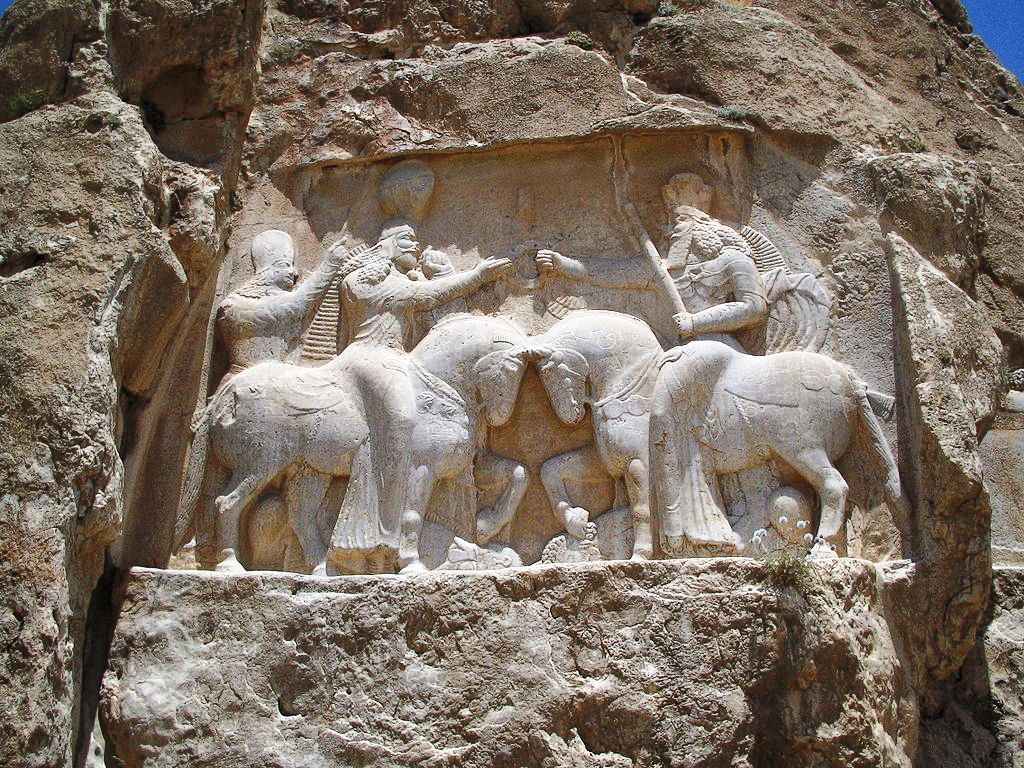
Below is a picture of a cameo showing the combat between Sasanian king Shapur I and Roman emperor Valerian in which Valerian was seized, according to Shapur, “with our own hand.” The combat occurred during the Battle of Edessa in 260 CE. It took place between the armies of the Roman Empire under the command of Emperor Valerian and Sassanian forces under Shahanshah (King of the Kings) Shapur I. The Roman army was defeated and captured in its entirety by the Persian forces. That was the first time a Roman emperor was taken prisoner.
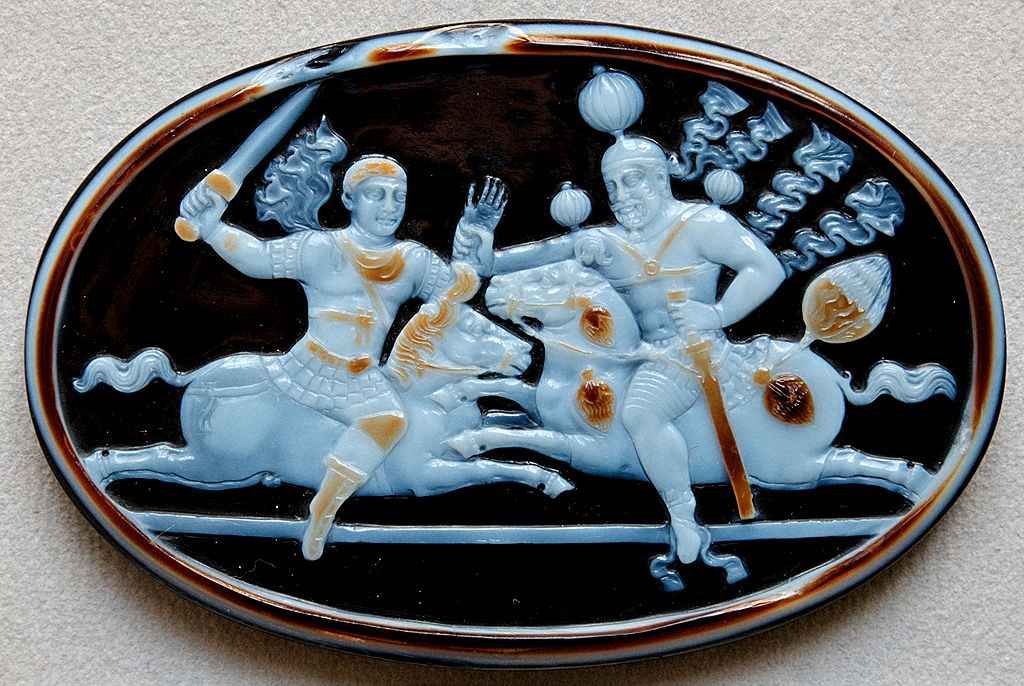
Note: Edessa is a city in Mesopotamia; the map below shows its location (circled in red):

One of the famous kings is Shapur II (309 – 379 CE), also known as Shapur the Great. Below is a bust of king Shapur II:

Below shows a plate of a king hunting rams:
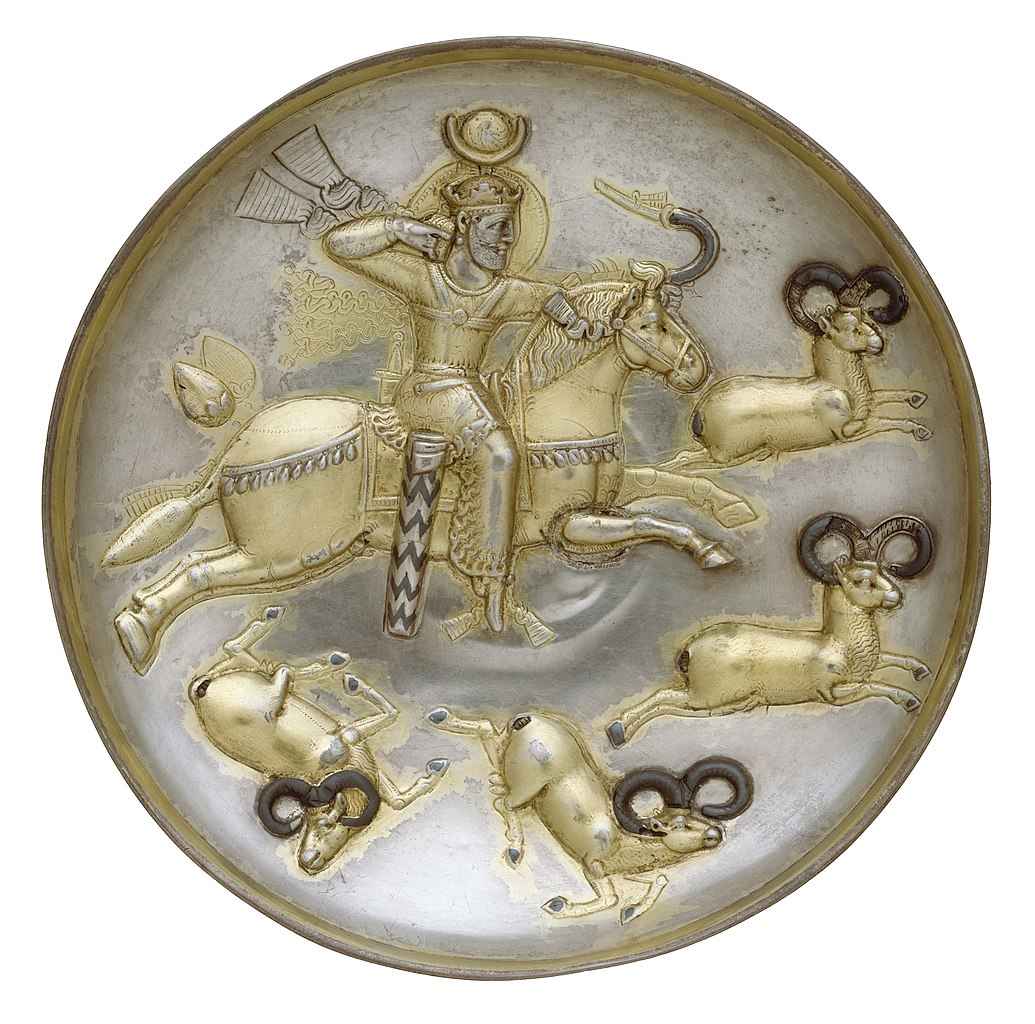
The Sassanian Empire was later conquered by the Rashidun Caliphate. The Caliphates adopted many aspects of the Persian culture. During the Islamic Golden Age, many Persians contributed greatly to the arts and science of the Caliphate.
The Sassanian Empire had numerous battles with the Roman (and later, Byzantine) Empire. However, it had relatively good relationship with China and India. The Sassanian Empire carried out active foreign relations with China, and ambassadors from Persia frequently traveled to China. Chinese documents report on sixteen Sassanian embassies to China from 455 to 555. Commercially, land and sea trade with China was important to both the Sassanian and Chinese Empires. Large numbers of Sassanian coins have been found in southern China, confirming maritime trade. Below is a Chinese painting of a Persian ambassador at the Chinese court of Emperor Yuan of Liang in his capital Jingzhou in around 530 CE
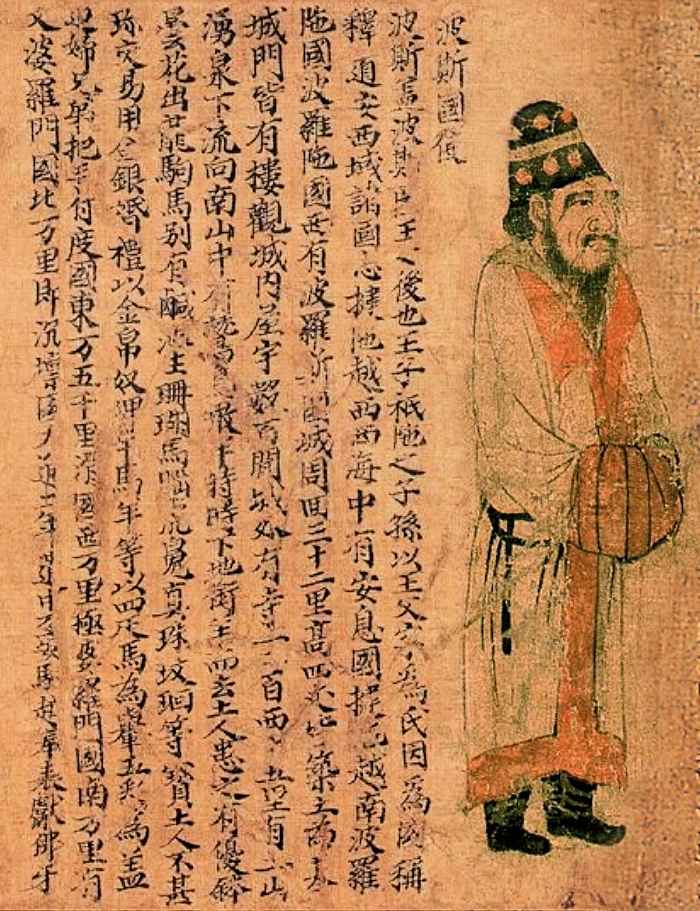
Upon the empire's conquest by the Islamic caliphate in 651, members of the imperial family fled in exile to China, where they would become accepted as members of the imperial court by Emperor Gaozong of Tang. Although there would be several attempts to invade Islamic Persia with Chinese support, this branch of the Sassanian royal family would remain in China indefinitely. Narsieh, the last recorded Sassanian in China, would adopt the surname Li (李) in honor of the Chinese imperial family.
There were extensive cultural exchange between the Sassanian and Indian. During Khosrau I's reign, many books were brought from India and translated into Middle Persian. Some of these later found their way into the literature of the Islamic world and Arabic literature. One example was the translation of the Indian Panchatantra by one of Khosrau's ministers, Borzuya, a physician. There were indication that he was educated at the Academy of Gondishapur. This translation, known as the Kalīlag ud Dimnag, later made its way into the Arabic literature and Europe. The details of his legendary journey to India and his daring acquisition of the Panchatantra are written in full detail in Ferdowsi's Shahnameh, which says:
“In Indian books, Borzuya read that on a mountain in that land there grows a plant which when sprinkled over the dead revives them. Borzuya asked Khosrau I for permission to travel to India to obtain the plant. After a fruitless search, he was led to an ascetic who revealed the secret of the plant to him: The "plant" was word, the "mountain" learning, and the "dead" the ignorant. He told Borzuya of a book, the remedy of ignorance, called the Kalila, which was kept in a treasure chamber. The king of India gave Borzuya permission to read the Kalila, provided that he did not make a copy of it. Borzuya accepted the condition but each day memorized a chapter of the book. When he returned to his room he would record what he had memorized that day, thus creating a copy of the book, which he sent to Iran. In Iran, Bozorgmehr translated the book into Pahlavi and, at Borzuya's request, named the first chapter after him.”
Below is a 15th century woodcut showing a portrait of Borzuya:

The Sassanian Empire was overthrown by the Rashidun Caliphate in 651 CE. The collapse of the Sasanian Empire led to Islam slowly replacing Zoroastrianism as the primary religion of Iran. A large number of Persian Zoroastrians chose to emigrate to escape Islamic persecution. One of the major destinations is India. They lived in the Gujarat area along the west coast of India. Today, there are about 100,000 Zoroastrians in India. Below is a map showing the location of Gujarat:

Below are publications on Sassanian Empire:
(1) Sassanid Persia
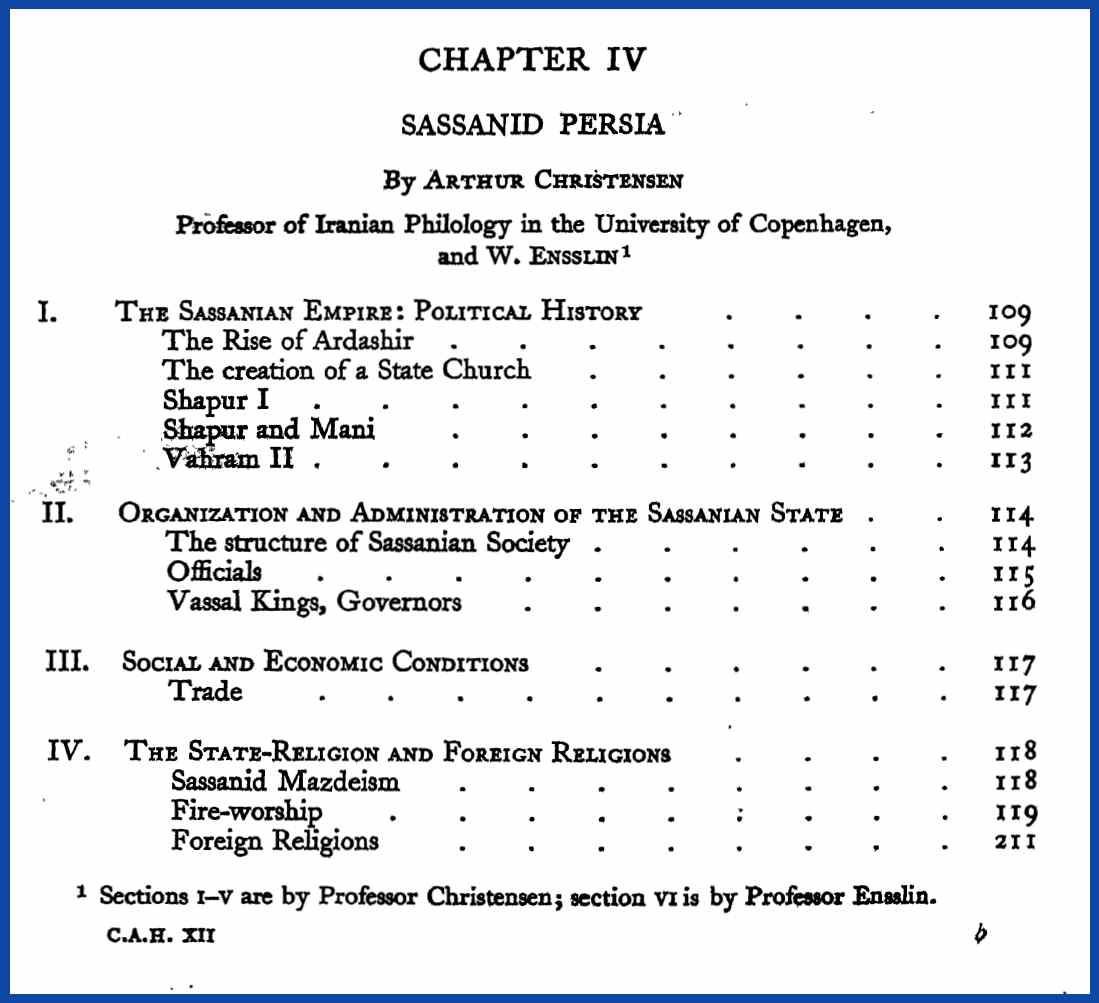
(2) The Cultural Impact of Sasanian Persia along the Silk Road - Aspects of Continuity


(4) An Imperial Frontier of the Sasanian Empire: further fieldwork at the Great Wall of Gorgan
